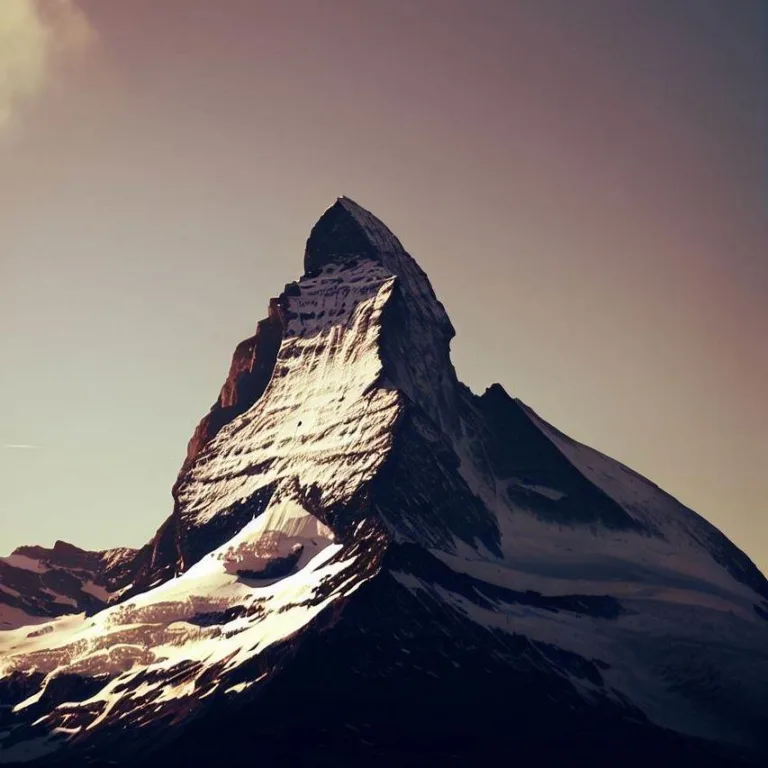Welcome to our comprehensive guide on the awe-inspiring Matterhorn, an iconic mountain that stands as a testament to nature’s grandeur and human endeavor. With its distinctive pyramid-like shape, the Matterhorn has captured the imagination of adventurers, climbers, and nature enthusiasts for generations.
The mythical matterhorn
Rising majestically on the border between Switzerland and Italy, the Matterhorn is a striking pyramid of rock and ice that reaches a breathtaking height of 4,478 meters (14,692 feet). This iconic mountain has been a source of inspiration for artists, writers, and explorers, symbolizing the beauty and challenges of the alpine world.
Natural beauty and biodiversity
Surrounding the Matterhorn is a pristine alpine landscape, home to diverse flora and fauna adapted to survive in the harsh mountain environment. Alpine flowers bloom in vivid colors during the summer months, creating a stunning contrast against the snow-capped peaks. Ibex, chamois, and marmots are among the fascinating creatures that call this region home.
Mountaineering legacy
The Matterhorn’s challenging ascent has drawn mountaineers from around the globe. In 1865, a historic first ascent was successfully completed by Edward Whymper and his team, marking a significant milestone in alpine history. Today, adventurers continue to seek the thrill of conquering its steep slopes and exposed ridges.
Visiting the matterhorn
For those looking to experience the Matterhorn’s beauty without attempting its ascent, there are numerous ways to explore the region. The charming Swiss village of Zermatt serves as a gateway to the mountain and offers a range of accommodations, from cozy chalets to luxurious hotels. Visitors can take the Gornergrat Railway for panoramic views of the Matterhorn and surrounding peaks.
Activities for All Seasons
Whether you visit in the summer or winter, the Matterhorn region offers a wealth of activities. During the warmer months, hiking and mountain biking trails allow you to immerse yourself in the alpine wilderness. In the winter, the area transforms into a snowy wonderland, attracting skiers and snowboarders to its world-class slopes.
Preserving the Alpine Ecosystem
Efforts to protect the fragile alpine ecosystem around the Matterhorn are ongoing. Responsible tourism practices, waste management, and sustainable development are crucial in maintaining the natural beauty of this region for future generations to enjoy.
Frequently Asked Questions (FAQs)
Q: How difficult is it to climb the Matterhorn?
A: Climbing the Matterhorn is a challenging endeavor that requires technical skill, physical fitness, and mountaineering experience. It’s recommended to undertake the ascent with a certified guide.
Q: Can I visit the Matterhorn without attempting the climb?
A: Absolutely! The Matterhorn region offers a range of activities, including hiking, sightseeing, and enjoying the alpine scenery. Zermatt provides various amenities for visitors.
Q: Is the Matterhorn part of a national park?
A: While the Matterhorn itself is not located within a national park, the surrounding area is protected, and efforts are made to ensure sustainable tourism and environmental conservation.
Q: When is the best time to visit the Matterhorn?
A: The Matterhorn can be visited year-round. The summer months are ideal for hiking and outdoor activities, while the winter season offers excellent skiing and snowboarding opportunities.
Q: Are there accommodations available near the Matterhorn?
A: Yes, the village of Zermatt offers a range of accommodations to suit various budgets and preferences, providing convenient access to the Matterhorn and its surrounding attractions.
Viz také:






